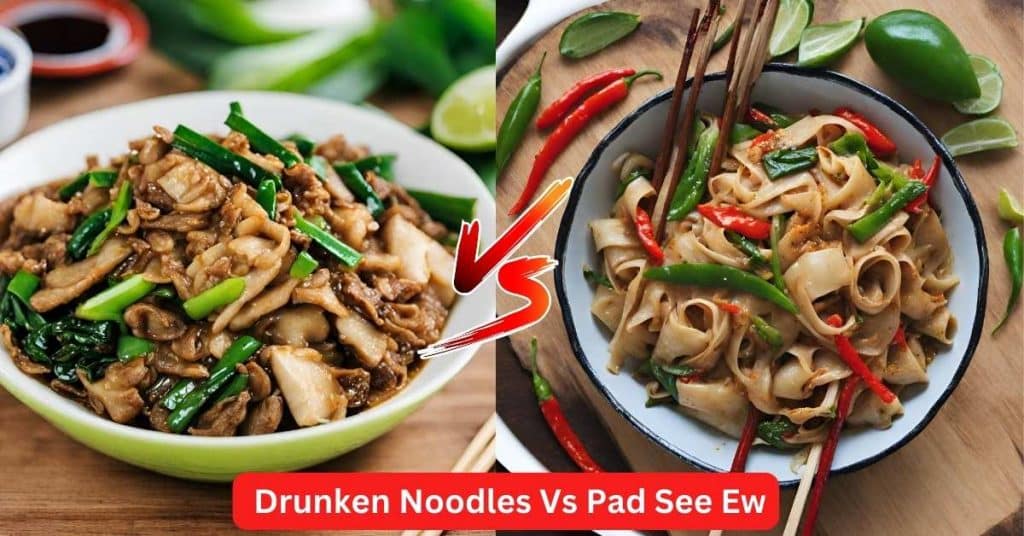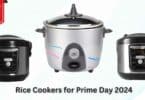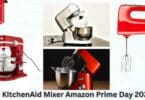The main difference between Drunken Noodles and Pad See Ew is the level of spiciness. Drunken Noodles are known for their spicier taste, which comes from ingredients like Thai basil, garlic, and chilies. On the other hand, Pad See Ew has a sweeter flavor profile, typically created with a mix of soy sauce and oyster sauce.

Key Difference Between Drunken Noodles And Pad See Ew
Flavor Profile
- Drunken Noodles: This dish is characterized by a bold, spicy flavor due to the inclusion of Thai basil, garlic, and fresh chilies. It can also be richer and saltier, with some recipes including additional vegetables like baby corn.
- Pad See Ew: Offers a sweeter taste from the combination of soy sauce and oyster sauce. It lacks the spiciness of Drunken Noodles and is generally considered less bold in flavor.
Vegetables and Ingredients
- Drunken Noodles: Typically made with a variety of vegetables, such as baby corn and other seasonal offerings, and always includes the key ingredient of Thai basil, which contributes to its distinctive taste.
- Pad See Ew: Commonly uses Chinese broccoli and has a simpler vegetable profile compared to Drunken Noodles.
Sauce Composition
- Drunken Noodles: The sauce for Drunken Noodles can vary, but it usually involves a mixture that emphasizes spiciness and richness.
- Pad See Ew: The sauce is known for its sweeter taste due to the primary use of soy sauce and oyster sauce which gives it its characteristic flavor.
Spiciness
- Drunken Noodles: This dish has a noticeable spicy kick which is one of its defining characteristics.
- Pad See Ew: Lacks this spiciness, opting instead for a milder and sweeter sauce which makes it quite distinct from Drunken Noodles.
| Feature | Drunken Noodles (Pad Kee Mao) | Pad See Ew |
|---|---|---|
| Spiciness | Spicy, with chilies, garlic, and Thai basil | Mild, with a sweet and tangy sauce |
| Flavor Profile | Bold, spicy, and slightly salty | Sweeter, less bold, savory |
| Vegetables | Various, including baby corn and bell peppers | Typically Chinese broccoli |
| Noodles | Wide rice noodles | Wide rice noodles |
| Sauce | Varied; can include fish sauce, soy sauce, and oyster sauce | Soy sauce, oyster sauce, sometimes with a touch of sugar |
| Protein Options | Chicken, beef, tofu, shrimp | Chicken, beef, tofu, seafood |
| Herbs | Thai basil is a key ingredient | Not typically herb-forward |
| Common Pairing | Often eaten with an ice-cold beer | Enjoyed on its own or with a drink |
| Preparation Time | Quick, suitable for busy nights | Quick, with a speedy prep time |
| Origin | Thai cuisine with a Chinese influence | Thai cuisine with a Chinese influence |
| Popularity | Popular in Thailand and internationally | Common street food in Thailand and popular worldwide |
Similarities Between Drunken Noodles And Pad See Ew
- Origins: Both dishes have Chinese influences and were introduced to Thai cuisine by Chinese workers.
- Noodles: They both use wide rice noodles which are essential for absorbing the rich flavors of the sauces.
- Cooking Style: Both are stir-fried, a method that enhances their flavors and allows for a quick preparation time.
What is Drunken Noodles, or Pad Kee Mao?
Drunken Noodles, or Pad Kee Mao, is a celebrated Thai dish known for its robust flavors and varied textures. This stir-fry dish is a medley of broad rice noodles, soy sauce, fish sauce, garlic, a choice of meat, seafood, or tofu, chili, holy basil, and a mix of vegetables. It stands apart from other noodle dishes, such as Pad Thai, by offering a savory flavor rather than a sweet one.
The dish’s name, which translates to “drunken noodles,” is tied to the idea that it’s the perfect accompaniment to an ice-cold beer or as a remedy for a hangover, suggesting that it’s often enjoyed after a night out drinking. Its preparation is relatively quick, making it a convenient choice for busy evenings yet flavorful enough for special occasions.
Drunken noodles are widely popular not just in Thailand but have also found a special place in the hearts of food enthusiasts across the United States.
What is Pad See Ew?
Pad See Ew is a popular Thai stir-fried noodle dish that features wide rice noodles, soy sauce, eggs, vegetables, and a protein source such as chicken, beef, tofu, or seafood. Its name translates to “fried soy sauce” in Thai, indicative of the dish’s key flavor component. The noodles in Pad See Ew are typically caramelized with a sweet and tangy sauce that creates a balance of flavors. It’s a staple street food in Thailand and a favorite in Thai restaurants globally.
This dish is known for its similarity to the Chinese Beef Chow Fun, using wide rice noodles that are stir-fried to perfection. The primary difference in the ingredients comes from Pad See Ew’s use of Chinese broccoli and egg, as opposed to Beef Chow Fun’s typical mung bean sprouts and scallions.
Pad See Ew is recognized for its simple yet delicious taste and is one of the most sought-after noodle dishes in Thai cuisine, both on the streets and in restaurants around the world. The success of a good Pad See Ew lies in the sauce, which is key to achieving the authentic taste of this beloved dish.
Should I Try Drunken Noodles Or Pad See Ew?
The choice between Drunken Noodles and Pad See Ew often comes down to individual taste preferences and tolerance for spiciness:
- Drunken Noodles: This dish is typically favored by those who appreciate a good kick of heat and a complex layering of flavors. It’s ideal for spice enthusiasts and adventurers in culinary tastes. It also has a variety of vegetables and a bold taste, so it may appeal to those looking for a hearty meal with a punch.
- Pad See Ew: This is often preferred by individuals who enjoy a more subdued, sweeter, and savory flavor profile. It’s a go-to for those who may be less inclined towards spicy foods or who appreciate the simplicity of a dish that focuses on a balance of sweet and savory. It’s also a popular choice for children or for those who are new to Thai cuisine and want to start with something milder.
Both dishes can cater to a broad audience, from foodies looking to explore different aspects of Thai cuisine to those simply seeking a satisfying meal.
Drunken Noodles (Pad Kee Mao) Recipe
Creating an authentic Thai meal at home can be a rewarding experience. Here’s a simple recipe for Drunken Noodles that you can try in your kitchen.
Ingredients:
- 200g wide rice noodles
- 2 tablespoons vegetable oil
- 4 cloves garlic, minced
- 1-2 bird’s eye chilies, finely chopped (adjust to your spice preference)
- 200g sliced chicken, beef, tofu, or shrimp
- 1 onion, sliced
- 1 bell pepper, julienned
- 1 tomato, cut into wedges
- 1 handful Thai basil leaves
- 2 tablespoons fish sauce
- 1 tablespoon soy sauce
- 1 tablespoon oyster sauce
- 1 teaspoon sugar
- 1/2 teaspoon ground black pepper
Instructions:
- Prepare the rice noodles according to the package instructions, usually soaking in warm water until soft.
- Heat oil in a wok or large pan over high heat. Add the garlic and chilies, stir-frying until aromatic.
- Add your protein choice and stir-fry until cooked through.
- Toss in the onion and bell pepper, stir-frying for a couple of minutes.
- Add the noodles and tomato wedges, and do a quick stir.
- Pour in the fish sauce, soy sauce, oyster sauce, and sprinkle the sugar over. Stir everything to combine well.
- Add the Thai basil leaves and toss the pan’s contents until the basil wilts.
- Serve hot, garnished with more basil if desired.
Pad See Ew Recipe:
Creating an authentic Thai meal at home can be a rewarding experience. Here’s a simple recipe for Pad See Ew that you can try in your kitchen.
Ingredients:
- 200g wide rice noodles
- 2 tablespoons dark soy sauce
- 1 tablespoon light soy sauce
- 1 tablespoon oyster sauce
- 1 teaspoon sugar
- 2 tablespoons vegetable oil
- 2 cloves garlic, minced
- 200g thinly sliced chicken, beef, or tofu
- 2 eggs, lightly beaten
- 1 handful of Chinese broccoli, cut into bite-sized pieces
Instructions:
- Soak the rice noodles in warm water until they are soft, then drain.
- Combine dark soy sauce, light soy sauce, oyster sauce, and sugar in a bowl.
- Heat one tablespoon of oil in a wok or large pan over high heat, then add the garlic and your protein choice, cooking until just done.
- Push the ingredients to one side of the wok, add another tablespoon of oil, and pour in the beaten eggs. Scramble the eggs and then mix with the cooked protein.
- Add the noodles and the sauce mixture. Stir everything quickly to combine and allow the noodles to caramelize slightly.
- Add the Chinese broccoli and continue to stir-fry until the greens are tender but still crisp.
- Serve your Pad See Ew hot off the wok.
Remember, the key to great stir-fried noodles is high heat and quick movement. This way, you get that authentic, slightly charred flavor that’s so characteristic of Thai street food. Enjoy your cooking adventure!
FAQs
Are Drunken Noodles actually made with alcohol?
No, Drunken Noodles do not contain alcohol despite their name. The dish is free from any alcoholic ingredients.
Is it possible to make vegan-friendly Drunken Noodles?
Yes, Drunken Noodles can be made vegan-friendly. You can use tofu or a variety of vegetables as substitutes for meat-based ingredients.
How healthy are Drunken Noodles?
The healthiness of Drunken Noodles depends on the specific recipe used. Most versions are rich in nutrients, thanks to a generous use of fresh vegetables like bell peppers, onions, and beans, and proteins like shrimp or chicken. However, like all dishes, they are best enjoyed in moderation for a balanced diet.
Can I substitute other noodles for pad see ew?
Yes, you can use different types of noodles like rice vermicelli or egg noodles, though it’s not traditional to use Pad Thai noodles. If you do, you might need to tweak the cooking method slightly.
Can I use chicken instead of beef?
Absolutely. Chicken thighs are recommended for their flavor and texture, but chicken breast works too if you prefer it.
How can I make a vegetarian pad see ew?
Use firm or extra firm tofu as a meat substitute. Fry the tofu until golden before adding it to the noodles. You can also use vegetarian oyster sauce and substitute soy sauce for fish sauce.
What’s the best way to store and reheat leftovers?
Pad See Ew doesn’t store well. If necessary, store in an airtight container and reheat in the microwave until hot. The texture may change, so it’s best eaten fresh. It’s recommended to keep leftovers for no longer than one day.
Conclusion
Drunken Noodles and Pad See Ew are two distinct pillars of Thai cuisine, each standing out with unique flavors and culinary experiences. Drunken Noodles cater to the spice aficionados, bringing a rich and pungent array of tastes with every bite, complemented by a variety of vegetables and the unmistakable presence of Thai basil. Pad See Ew, contrastingly, offers a sweeter and more savory profile, often preferred by those who lean towards milder flavors or are perhaps less accustomed to the fiery zest of Thai chilies.
While both dishes may share similarities in their noodle type and Chinese-influenced origins, they present vastly different dining experiences. Drunken Noodles could be the go-to for a lively dinner party or to satiate a craving for something spicy, whereas Pad See Ew could be the comfort food of choice that’s both familiar and satisfying, especially as a gentle introduction to Thai cuisine.
Ultimately, the decision between the two depends on your personal taste preference and mood. Whether you’re in the mood for the bold and the spicy or the sweet and savory, both dishes are a testament to the rich and diverse flavors that Thai cooking has to offer.









Leave a Comment